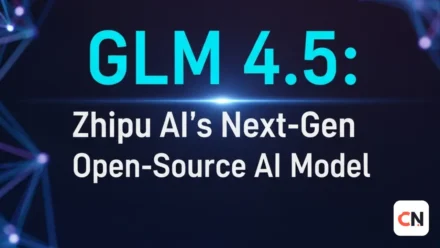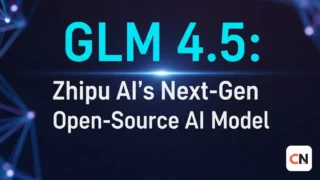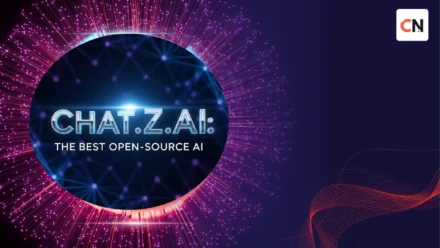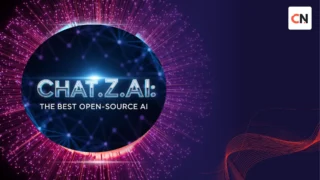Just a couple of days ago, Zhipu AI unveiled its most advanced Vision-Language Model (VLM) to date — GLM-4.5V — sparking excitement across both AI research and industry circles. With a staggering 106 billion parameters (including 12 billion active parameters), this model doesn’t just “read” images; it can understand and reason over videos, charts, documents, and even user interfaces.
What makes GLM-4.5V stand out is its versatile multimodal reasoning — the ability to process and combine multiple types of input (text, images, videos) to deliver deep understanding and precise responses. Powered by innovations like 3D-RoPE, 64K long-context support, and 3D convolution, it achieves state-of-the-art performance across more than 40 public multimodal benchmarks.
Importantly, GLM-4.5V isn’t limited to researchers — it’s open-source and available under the MIT license on GitHub, Hugging Face, and ModelScope. Through Zhipu AI’s BigModel.cn API platform, it’s also accessible for developers with cost-effective pricing.
Read Also: GLM-4.5-Air: Lightweight AI for Coding, Chat & Automation
From generating front-end code from webpage screenshots, to geolocation estimation, to advanced video analysis — GLM-4.5V offers a glimpse into the future of AI: smarter, more versatile, and more accurate than ever.
What is GLM-4.5V?
GLM-4.5V is an advanced multimodal AI model developed by Zhipu AI (now rebranded as Z.ai).
It belongs to the class of Vision-Language Models (VLMs) — AI systems capable of understanding and processing both text and visual content.
Unlike traditional language models that only handle text, GLM-4.5V can interpret images, diagrams, and other visual data alongside written language, enabling richer and more context-aware responses.
The model was officially released as open-source on August 11–12, 2025, making it accessible to developers, researchers, and organizations worldwide for innovation and integration into various applications.
Key capabilities include:
- Understanding and reasoning over mixed text-and-image inputs.
- Generating descriptions, answers, or insights based on visual content.
- Supporting multilingual interactions for global accessibility.
Potential applications:
- AI assistants that can “see” and read images.
- Educational tools that explain diagrams, charts, or infographics.
- Data analysis from visual materials like maps or scanned documents.
Key Highlights
- 106 billion parameters (with 12 billion active at any given time), enabling high accuracy while optimizing efficiency.
- Completely open-source under the MIT License, allowing unrestricted use, modification, and distribution.
- Achieves State-of-the-Art (SOTA) performance across 41+ benchmark tests, covering both text and vision tasks.
- Designed to compete directly with industry leaders such as GPT-4V and Claude Sonnet 4, offering comparable or superior capabilities in many areas.
Technical Architecture and Specifications
Core Architecture
GLM-4.5V is built on a Mixture-of-Experts (MoE) architecture — a design where multiple specialized sub-models (“experts”) are trained for different types of tasks, but only a subset of them is activated for each input.
Key architectural features:
- Total Parameters: 106 billion, ensuring deep representational power.
- Active Parameters: Only 12 billion are engaged during inference, allowing for efficient resource usage without compromising performance.
- Hybrid Vision-Language Pipeline: Integrates visual encoding and text processing into a unified framework, enabling seamless reasoning over both modalities.
This architecture allows GLM-4.5V to maintain state-of-the-art accuracy while reducing computational cost, making it suitable for large-scale deployments as well as research experimentation.
Components Breakdown
GLM-4.5V’s architecture is composed of several specialized modules that work together to process both text and visual data:
- Visual Encoder – Processes images (and individual video frames) to extract meaningful visual features such as objects, colors, and spatial relationships.
- MLP Adapter – A Multi-Layer Perceptron bridge that connects the vision encoder with the language model, ensuring smooth alignment between visual and textual representations.
- Language Decoder – Generates coherent, context-aware text based on combined visual and textual inputs, enabling tasks like description, reasoning, and Q&A.
- 3D Convolutional Encoder – Specially designed for video analysis, it captures temporal features (motion, sequence changes) in addition to spatial patterns.
- 3D-RoPE (Rotational Positional Encoding) – Enhances spatial reasoning by encoding 3D positional relationships, allowing the model to better understand depth, angles, and relative positions in complex visuals.
Together, these components enable GLM-4.5V to handle static images, moving videos, and text with a unified reasoning pipeline.
Context and Memory
GLM-4.5V is designed to handle extended multimodal contexts with remarkable efficiency.
Key capabilities:
- Up to 64K tokens of context length, allowing the model to process and reference long sequences of information.
- Can manage long documents, multiple images, and videos in a single input session without losing coherence.
- Advanced memory management ensures efficient processing by prioritizing relevant details and minimizing unnecessary computation.
This extended context capability enables complex, multi-step reasoning — for example, analyzing a research paper alongside related charts, diagrams, and short video clips, all within one prompt.
Key Features and Capabilities
Multimodal Understanding
GLM-4.5V is engineered to interpret and reason over images, videos, and documents with high precision.
Image Analysis
- Scene Description & Complex Visual Reasoning – Generates detailed captions and explains relationships between objects in a scene.
- Multi-Image Comparison & Analysis – Identifies similarities, differences, and patterns across multiple images.
- Object Detection with Precise Coordinates – Locates objects within an image and returns accurate bounding box data for further processing.
Video Processing
- Long Video Segmentation – Breaks videos into meaningful segments based on scene changes or narrative flow.
- Event Recognition & Temporal Understanding – Detects actions, events, and time-based sequences within video content.
- Character Tracking & Story Analysis – Identifies characters across frames, follows their movements, and analyzes narrative elements.
Document Intelligence
- Understanding Structured Documents – Reads and interprets PDFs, PPT presentations, and Word files.
- Data Extraction from Charts, Graphs, and Tables – Accurately retrieves numerical and textual information from visual data sources.
- Complex Document Structure Analysis – Understands headings, paragraphs, footnotes, and references to maintain document context during processing.
Advanced Visual Capabilities
GLM-4.5V goes beyond standard image recognition, offering precise localization, interface understanding, and open-world reasoning.
Visual Grounding & Location
- Precise Object Localization – Identifies objects with exact bounding box coordinates.
- Perceptual Analysis – Answers complex queries such as “What looks fake in this image?” by detecting inconsistencies or anomalies.
- Coordinate-Based Identification – Returns object positions in pixel coordinates for integration with downstream systems.
GUI Understanding
- Screenshot Analysis – Interprets computer screenshots and mobile app interfaces.
- UI Element Recognition – Detects and labels icons, buttons, menus, and other interface components.
- Code Generation from Screenshots – Generates HTML, CSS, or JavaScript code based on the captured interface.
- Desktop Automation & RPA Applications – Enables robotic process automation workflows by understanding and interacting with visual interfaces.
Open-World Reasoning
- Location Guessing from Subtle Clues – Infers geographical location using environmental hints in an image.
- Context from Architecture, Vegetation, and Signage – Uses cultural and natural elements to derive location-based insights.
- Independent Contextual Understanding – Provides answers without relying on external searches, based purely on internal reasoning.
Thinking Mode Feature
GLM-4.5V introduces a Thinking Mode that allows users to choose between fast responses and deep reasoning, depending on the task requirements.
Dual Operation Modes
- Thinking Mode ON – Engages step-by-step, detailed reasoning for complex queries, using a chain-of-thought approach to improve accuracy and explainability.
- Thinking Mode OFF – Prioritizes speed, delivering concise answers without the extended reasoning process.
This flexibility ensures an optimal balance between speed and accuracy, allowing the model to adapt to different use cases — from real-time applications to in-depth problem-solving.
Read Also: What Is Chat.z.ai? Free AI Chatbot with Slides Tool
Training Methodology
Three-Stage Training Process
GLM-4.5V is trained using a three-stage methodology designed to maximize both multimodal understanding and real-world performance.
1. Large-Scale Multimodal Pre-Training
- Conducted on a massive, diverse dataset combining text, images, and videos.
- Builds foundational vision-language understanding, enabling the model to interpret and connect multimodal inputs effectively.
2. Supervised Fine-Tuning
- Incorporates chain-of-thought reasoning for structured, step-by-step problem solving.
- Improves task-specific accuracy, such as visual question answering, document parsing, and contextual reasoning.
3. Reinforcement Learning with Curriculum Sampling (RLCS)
- Uses human feedback to refine the model’s decision-making and output quality.
- Employs a curriculum-based sampling strategy, gradually introducing more complex real-world tasks to boost adaptability and performance.
This staged approach ensures GLM-4.5V is robust, versatile, and optimized for both general-purpose use and specialized applications.
Data and Quality
GLM-4.5V’s performance is built on carefully curated, high-quality multimodal datasets that span a wide range of content types and scenarios.
Key aspects:
- High-Quality Multimodal Sources – Combines extensive datasets of text, images, videos, and structured documents.
- Diverse Visual Content – Includes photographs, diagrams, charts, infographics, scanned documents, and UI screenshots to ensure broad visual understanding.
- Robustness to Real-World Noise – Training incorporates noisy, imperfect, or incomplete data, enabling the model to maintain accuracy in less-than-ideal conditions.
This approach ensures that GLM-4.5V can generalize effectively, handling both clean, well-structured data and messy, real-world inputs with equal proficiency.
Performance and Benchmarks
State-of-the-Art (SOTA) Results
GLM-4.5V achieves state-of-the-art performance across 41+ public vision-language benchmarks, demonstrating its versatility and competitive edge in multimodal reasoning.
Key benchmark highlights:
- MMBench – Excels in complex multimodal reasoning, integrating text and visual cues for accurate answers.
- AI2D – Leads in interpreting scientific diagrams, including labeled illustrations and educational visuals.
- MathVista – Sets new records in mathematical visual reasoning, solving problems that combine numerical and visual data.
- MMStar – Scores highest in comprehensive multimodal evaluation, covering a broad range of visual and textual tasks.
These results position GLM-4.5V as a direct competitor to top-tier models like GPT-4V and Claude Sonnet 4 in both academic and real-world performance tests.
Competitive Analysis
GLM-4.5V stands out as a top-tier multimodal AI model, often matching or surpassing leading proprietary and open-source systems.
Head-to-head comparisons:
- vs GPT-4V – Delivers equal or better visual reasoning performance on key benchmarks, particularly in diagram interpretation and multi-image analysis.
- vs Claude Sonnet 4 – Offers stronger image understanding capabilities, with more precise object localization and visual grounding.
- vs Qwen-2.5-VL-72B – Achieves higher accuracy despite a smaller active parameter size, reflecting efficient architecture and optimized training.
- vs Other Open-Source Models – Maintains a clear leadership position across nearly all evaluated categories, from document intelligence to open-world reasoning.
This competitive edge demonstrates that GLM-4.5V is not only an open-source alternative to proprietary giants but a genuine rival in performance and versatility.
Specialized Task Performance
Beyond general benchmarks, GLM-4.5V delivers exceptional results in specialized, high-value domains:
- STEM Question Answering – Demonstrates exceptional accuracy in science, technology, engineering, and mathematics queries, integrating text, formulas, and diagrams for comprehensive answers.
- Chart Understanding – Achieves market-leading precision in extracting and interpreting data from bar graphs, pie charts, and complex statistical plots.
- GUI Operations – Delivers revolutionary capabilities in understanding and interacting with graphical user interfaces, enabling advanced RPA (Robotic Process Automation) workflows.
- Video Comprehension – Sets breakthrough performance levels in recognizing events, tracking objects, and interpreting storylines in long-form videos.
These strengths make GLM-4.5V a powerful choice for enterprise, research, and automation scenarios that demand domain-specific expertise.
Real-World Applications
GLM-4.5V’s ability to process text, images, videos, and documents with deep reasoning makes it highly adaptable across industries. Its multimodal intelligence allows organizations to solve complex problems, automate workflows, and enhance creativity with minimal manual effort.
Business Use Cases
- Quality Control in Manufacturing
Uses high-resolution image analysis to detect scratches, alignment errors, or component defects on production lines. Can identify microscopic flaws invisible to the human eye, reducing recall risks and improving product reliability. - Security & Surveillance Monitoring
Analyzes live or recorded CCTV feeds for suspicious activity, unusual patterns, or restricted-area breaches. Capable of detecting abnormal crowd behavior, vehicle movement violations, or unattended objects in real time. - Financial Data Interpretation
Reads and interprets complex market charts, heatmaps, and analytics dashboards. Automatically generates summaries, risk assessments, and investment insights from visual financial reports. - Legal Document Review
Processes lengthy contracts, spotting clauses that may pose compliance or liability issues. Can cross-reference legal terminology with current regulations for automated compliance verification.
Creative Applications
- Content Generation
Produces high-quality blog articles, ad copy, and social media posts tailored to brand tone and audience. Can incorporate visual prompts for themed content. - Design Assistance
Generates logo sketches, poster layouts, and marketing collateral concepts. Can suggest improvements to existing designs based on brand guidelines. - Video & Film Production
Analyzes raw footage to identify the best scenes, assists in scriptwriting, and even suggests camera angles based on story flow. - Web Development Automation
Converts website or app screenshots into fully functional HTML/CSS/JavaScript prototypes, speeding up development cycles.
Educational Support
- Personalized Tutoring
Explains visual educational content such as diagrams, maps, timelines, and physics illustrations in a student-friendly way. - Research Assistance
Reads academic papers, interprets embedded charts and tables, and summarizes findings for quick reference. - Automated Presentation Building
Generates slide decks with accurate text, visuals, and structured bullet points for lectures, workshops, or business pitches. - Language Learning with Visual Context
Uses images and videos to teach vocabulary, grammar, and pronunciation, reinforcing memory through contextual examples.
Automation and Productivity
- End-to-End Workflow Automation
Handles repetitive visual and document-based tasks such as batch image tagging, scanned form extraction, or invoice validation. - Mass Data Processing
Efficiently processes terabytes of visual data for analytics, machine learning model training, or archival categorization. - Visual Customer Service Support
Answers customer queries involving uploaded images — for example, identifying product defects, giving setup instructions, or verifying IDs. - Accessibility Enhancement
Reads and narrates screen content for visually impaired users, including complex interfaces, images, and diagrams.
Release and Availability
GLM-4.5V is now fully released to the public, making it one of the most capable open-source multimodal AI models available in 2025. The model has been designed for flexible deployment, catering to researchers, developers, enterprises, and hobbyists alike.
Current Status (August 2025)
- Official Release Date: August 11–12, 2025
The model was unveiled with full source access and accompanying documentation, marking one of the most significant open-source AI releases of the year. - License: MIT License
This permissive license allows commercial, academic, and personal use without restrictive terms — enabling integration into proprietary products, research projects, and large-scale business solutions. - Primary Hosting:
Distributed through Hugging Face under the repositoryzai-org/GLM-4.5V, ensuring fast downloads, version control, and community collaboration.
Access Methods
- Hugging Face –
Directly download the model weights and configuration files for offline use or integration into existing ML pipelines. - Z.ai Platform API –
Provides cloud-based API access via:
https://docs.z.ai/guides/vlm/glm-4.5v
Ideal for developers who prefer not to manage infrastructure, offering secure and scalable inference hosting. - Local Deployment –
Supports deployment with vLLM and SGLang, enabling:- Private on-premise setups for sensitive data processing.
- Custom hardware optimization for cost efficiency.
- Demo Application –
A live interactive demo, GLM-4.5V-Demo-App, is hosted on Hugging Face Spaces, allowing anyone to test its capabilities without setup.
Optimized Versions
- GLM-4.5V-AWQ –
A quantized build tailored for low-resource environments such as consumer laptops, single-GPU servers, or edge devices, with minimal accuracy loss. - Configuration Variants –
Available in memory-optimized versions for constrained hardware and speed-optimized versions for real-time applications like chatbots or live video analysis. - API Integration Options –
Accessible through OpenRouter and several third-party AI API gateways, allowing developers to integrate GLM-4.5V into their platforms without model hosting overhead.
Limitations and Challenges
While GLM-4.5V represents a major leap in multimodal AI, it is not without constraints. Understanding these limitations is critical for safe, efficient, and responsible adoption.
Technical Limitations
- High Hardware Requirements –
With 106 billion total parameters (12B active), full-scale deployment demands substantial GPU resources, making it less accessible for smaller organizations without optimized variants. - Model Size Concerns –
Community feedback highlights the need for smaller, lightweight versions that can run effectively on consumer hardware without losing too much accuracy. - Performance Stability –
In extended sessions, the model may occasionally drift “off-rails” — producing irrelevant or inconsistent outputs, especially in very long reasoning chains. - No Real-Time Internet Access –
The model cannot fetch live or up-to-date information, relying entirely on its training dataset. This limits accuracy for recent events or niche real-time queries.
Practical Challenges
- Deployment Complexity –
Running the model locally with frameworks like vLLM or SGLang requires strong technical expertise, particularly in configuring GPUs, dependencies, and quantized builds. - Resource Intensity –
Even optimized builds demand significant memory and compute power, posing challenges for edge deployment or cost-sensitive projects. - Language Bias –
The model shows primary strength in Chinese due to its training distribution, with slightly less accuracy in certain low-resource languages. - Cultural Context Gaps –
Occasionally struggles with Western cultural references, idioms, or niche historical events that were underrepresented in training data.
Ethical Considerations
- Bias Propagation –
May reproduce or amplify biases present in its training data, potentially leading to skewed or insensitive outputs. - Misuse Potential –
Powerful image and video analysis capabilities could be exploited for deepfake creation, disinformation campaigns, or other malicious purposes. - Privacy Risks –
Processing personal visual data (photos, videos, documents) raises privacy and data protection concerns, especially in regulated industries. - Job Displacement –
Automation of visual inspection, document review, and other tasks could impact employment in certain sectors, necessitating workforce transition planning.
Conclusion
GLM-4.5V is a breakthrough in open-source multimodal AI, delivering performance on par with leading proprietary models while making advanced capabilities widely accessible. Its release under the MIT License democratizes AI, enabling developers, businesses, and researchers to build cost-effective, intelligent solutions.
This milestone proves that open-source models can match — and sometimes surpass — commercial counterparts, reshaping the AI landscape and laying a strong foundation for future innovation.
FAQs
What is GLM-4.5V?
An open-source Vision-Language Model by Z.ai that can understand and reason over text, images, videos, charts, and documents.
When was it released?
August 11–12, 2025, under the MIT License.
How powerful is it?
106B total parameters (12B active), using a Mixture-of-Experts architecture.
What can it do?
Image & video analysis
Document & chart understanding
GUI recognition & code generation
Multi-image comparison & location inference
How to access it?
Via Hugging Face download, Z.ai API, local deployment (vLLM/SGLang), or Hugging Face Spaces demo.
Hardware requirements?
Full model needs high-end GPUs, but quantized versions run on low-resource devices.
Limitations?
High compute demand
Strongest in Chinese language
No live internet access
Potential bias and misuse risks
Is it free?
Yes, fully open-source. API usage may have costs.






Leave a Comment